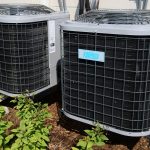How to Find the Best Freezer Repair Company?
May 6, 2022What to Do With Your Dining Room
May 12, 2022With the push to be more eco-friendly, many homeowners are switching to solar panels. About 4% of all Americans have them.
We understand why you would be hesitant to make the investment for them. While there are tax incentives in place to persuade people to buy them, the upfront cost can take a huge chunk out of your wallet.
Many people don’t want to spend that kind of cash without having a full understanding of what they’re getting. What are solar panels made of, and what are the different types?
We’ve got the answers to these burning questions and more. Check out this guide to learn the ins and outs of solar panel materials.
What Are Solar Panels?
Solar panels do as the name suggests. They take energy from the sun and convert it into electricity that you can use to power your home.
They do this using a combination of silicon, phosphorus, and boron. When the sun’s rays hit the glass surface of the panel, the chemicals inside cause an electron charge to happen.
What Are Solar Panels Made of?
Silicon, phosphorus, and boron are major ingredients that go into solar panels, but they’re not the only part of the process.
It takes metal, glass, and several different types of wire to make a single panel.
Silicon Solar Cells
No matter what types of solar panels you get, they’re going to contain silicon. It’s the main ingredient of the cells inside the casing.
Again, when the sun’s rays heat it up, it creates an electric charge that powers your home.
Glass Sheet
A thin sheet of glass is set on top of the silicon cells to protect them. When we say thin, we mean about 7 millimeters.
There’s also a protective sheet on the back of the panel that helps with insulation and heat distribution. It keeps the humidity inside the panel to a minimum as well.
In short, the glass sheet regulates the temperature in the panels, which allows them to work more efficiently.
Metal Frame
Nine times out of ten, the metal frame that holds the solar panel together is aluminum. It can hold up to bad weather better than most other materials.
It’s also easy to shape aluminum into a form that can work with the type of roof you have.
12V and Bus Wire
There are two different types of wire used in the making of solar panels. The first is 12V. It regulates the amount of electricity that flows to the inverter, allowing your system to work with energy efficiency in mind.
Bus wire connects right to silicon cells inside the panel. It’s the thing that transports the electric current around.
How Are Solar Panels Made?
So, how do all the ingredients listed above work together to create a panel? It’s a complicated process that starts with gathering the silicon.
Silicon
Did you know that silicon is the main mineral found in beach sand? This makes it one of the most abundant materials that people can get their hands on.
To turn it into the material that’s used in solar panels, it has to be exposed to extreme heat. Ironically, it’s not the most eco-friendly process, but it works.
Ingots
With the help of heat, the silicon forms rocks that are turned into tall ingots. It can be tricky to make sure all the atoms are aligned the correct way.
Boron is thrown into the mix to give the silicon the positive charge that makes it effective for solar panels.
Wafers
The solar panel manufacturer grabs a thin wire and cuts the ingot into wafers. The disk is so slim that it pretty much has the same consistency as a piece of paper.
Silicon is shiny enough to reflect the sun’s rays away from your home instead of absorbing them. To prevent that from happening, an anti-reflective coating goes on top of the wafers.
Solar Cells
Small metal conductors are added to every silicon solar cell. These conductors make it possible for the cells to turn the sun’s rays into electricity.
As things heat up, it causes a layer of phosphorus to diffuse inside the panel, which creates the negative charge needed to meet the positive charge created by the boron.
Cell to Panel
The wires work together to connect several solar cells. Sort of like sewing together a quilt.
The cells are sandwiched between the front and back layers and held together by the metal frame.
Junction Box Installation
Without the junction box, it will be easy for the wires inside your solar panels to undergo heavy damage. It does this by keeping the flow of electricity going forward.
If the flow reverses, it will cause the panel to consume energy instead of sending it where it needs to go.
Quality Test
The last step of the process is performing the quality test. To make sure that the panels meet certain standards, they have to go into a flash tester.
It puts them in a similar environment that they would have to handle every day as they sit on your roof. If they’re able to hold up and perform within proper perimeters, they’re shipped out.
Types of Panels
The materials and processes that we’ve talked about change slightly, depending on what solar panels you get. You can opt for monocrystalline, polycrystalline, or thin-film panels.
Monocrystalline
Out of all the different types of solar panels that exist, monocrystalline is the oldest. That doesn’t mean that they’re the best option. What it does mean is that they’ve undergone the most research.
They’re a bit darker in color than other types of panels that you can get. The reason is that they use pure silicon crystals.
The use of pure silicon makes them the most expensive panels that you can get because a large number of materials are wasted to create them.
We will say that monocrystalline panels last for a long time. Since you won’t have to replace them often, you’ll actually save money in the long run.
If you don’t have a lot of space to work with on your roof, monocrystalline is the way to go. They don’t take up a whole lot of room.
Polycrystalline
Polycrystalline panels are made when a bunch of different silicon fragments is melted down. From there, they’re poured into a mold.
The great thing about these panels is that they don’t use up a ton of waste. It’s for this reason that they’re some of the cheapest panels that you can buy.
The problem is that they don’t offer much in terms of heat resistance. That means they don’t work too well in environments where things get hot.
They’re also not as good at converting solar energy as some of the other panels on the market.
Thin-Film Solar Panels
Unlike other solar panels, the thin-film ones don’t use a metal frame. They’re super light and simple enough to install.
They come in all sorts of shapes and sizes, so it shouldn’t be hard to find a thin-film panel that will work with your roof. On the downside, they aren’t as energy efficient as polycrystalline and monocrystalline panels.
Are They Environmentally Friendly to Make?
While using solar panels can help you reduce your carbon footprint, the environment does take a hit when creating them. The process lets out a bit of pollution, and it uses up materials. You can say that about almost anything, however.
Solar panels have a lifespan of over 20 years. So even though they use resources, it’s spread out over time.
Can You Make Your Own Panels?
You can DIY your own solar panels, however, this is a “just because you can doesn’t mean you should” situation. There are a lot of dangers involved with the process.
It’s easy to start a fire when you’re trying to connect the wires. You also don’t have access to the high-quality materials that Blue Raven Solar has access to. If you do manage to make working panels, they won’t have the same kind of lifespan.
Ins and Outs of Solar Panel Construction Solved
Do you want to make the change to solar panels? To buy the right system for your home, it’s good to know how manufacturers make panels.
What are solar panels made of? It’s a complicated process that uses a wide range of materials.
While you can attempt to use our instructions to make your own, it’s best to let the professionals handle things. When it comes to saving power, you can’t afford to cut corners.
For more tips that will help you make your home more energy-efficient, feel free to explore the rest of our blog.








